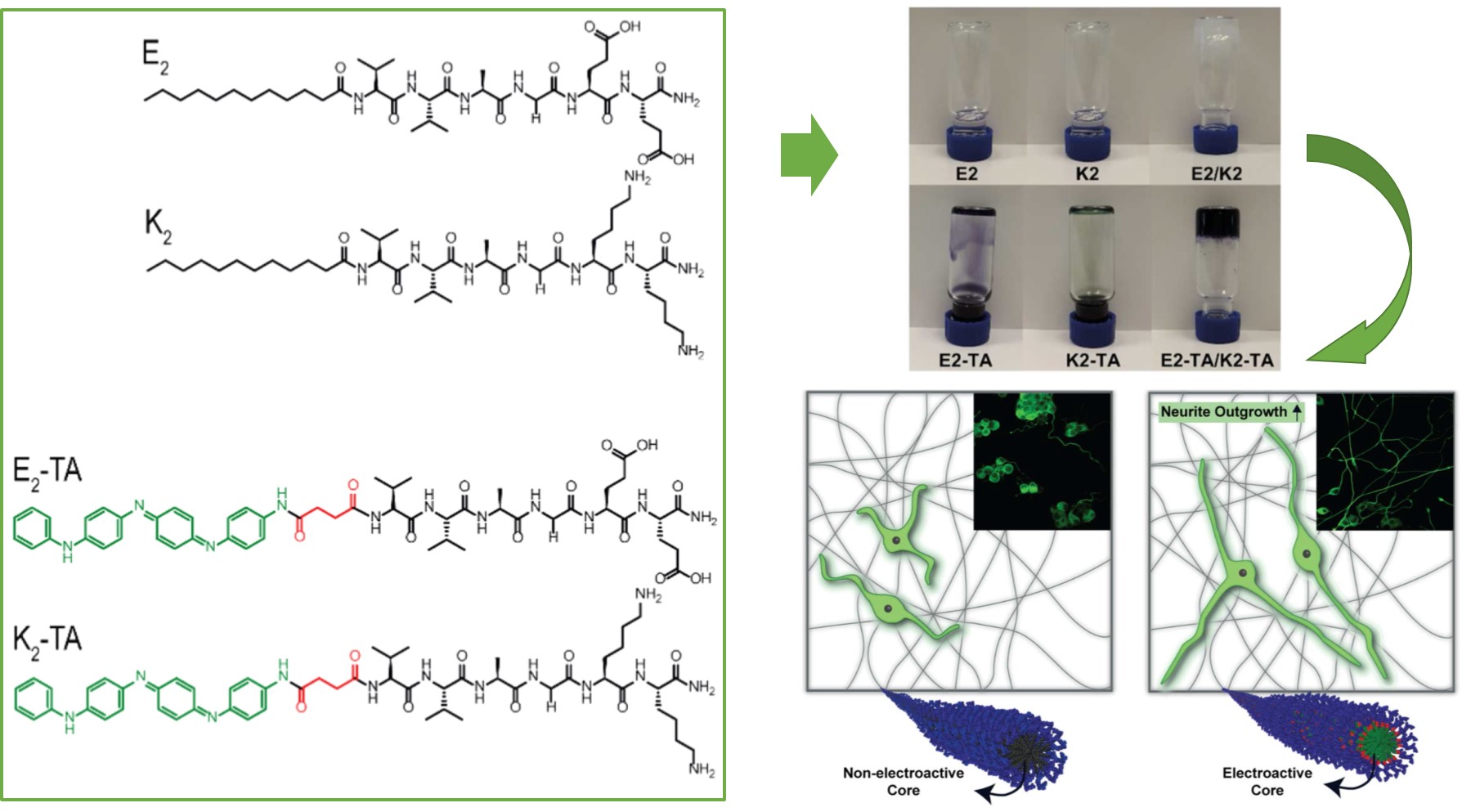|
苯胺共轭多肽纳米纤维的制备及神经分化的研究
ACS Appl. Mater. Interfaces2018, 10, 308−317 神经系统低损伤具有较低的再生能力,造成轴突束和目标组织失去联系,严重影响病人生活质量。低聚体如苯胺齐聚物具有优异的溶解性、加工性,结构及氧化态可控性,在水中通过分子间π-π共轭可形成自组装结构,可应用于神经组织再生。短序PAs具有生物相容性、降解性及丰富的官能基团,可应用于再生医学组织工程、纳米制备、生物矿化及电子器件。制备生物相容性的复合材料或在聚合物主链上附着肽序列为治疗神经缺损提供一种途径。 最近,毕尔肯大学的Ayse B. Tekinay和Mustafa O. Guler团队研究了一种由苯胺四聚体及多肽纳米纤维形成的超分子电活性纳米系统。首先,通过固相多肽合成的方法合成出具有两亲性的电活性及非电活性的多肽分子,利用多肽分子之间相反电荷的相互作用自组装形成一维纳米纤维,进而研究其表面形貌,电活性,动力学及神经细胞生物相容性、生物活性及分化能力。通过电荷之间的相互作用成功制备了一种苯胺结合多肽的纳米纤维水凝胶,其力学强度满足体内神经元及角质细胞的要求。此外,能提高PC-12细胞的神经分化能力,且上调了ERK1/2信号通路的磷酸化程度。 Nervous system injuries and damage cause detrimental consequences for the quality of patients’ lives due to the fact that the nervous system has a much lower regenerative potential compared to that of other tissues. Alternatively, oligomers provide the opportunity to design and produce defined and well characterized materials with defined functionality and properties due to their excellent solubility in common solvents and easier control of their chemical structures, which can make them more convenient for regeneration of nerve tissue. Because of their intrinsic biocompatibility, biodegradability, bio-functionality, rational design, and rich functional groups, short-sequence peptide amphiphile (PA) molecules have been comprehensively utilized in tissue engineering, regenerative medicine, nanofabrication, bio-mineralization, and electronic devices. Strategies such as preparing their composites or copolymers with biocompatible polymers or immobilizing cell adhesive peptide sequences onto the polymer backbone can make them more convenient for tissue engineering applications In this study, the author showed that TA-containing peptide amphiphiles can self-assemble into fibrillar network structures having electroactivity by mixing oppositely charged counterparts at neutral conditions. E2-TA/K2-TA scaffolds showed good biocompatibility toward PC-12 cells and did not alter their metabolic activity. The results suggest that neural differentiation of PC-12 cells was enhanced when cultured on E2-TA/K2-TA gels compared to that on nonconductive counterparts. Also, they observed that phosphorylation levels of ERK1/2 were increased on PC-12 cells on the conductive scaffolds compared to that on the nonconductive nanofiber gels. The E2 TA/K2-TA gels could be used as a promising material in peripheral nerve regeneration. (闫欢欢)
|
